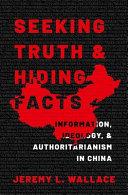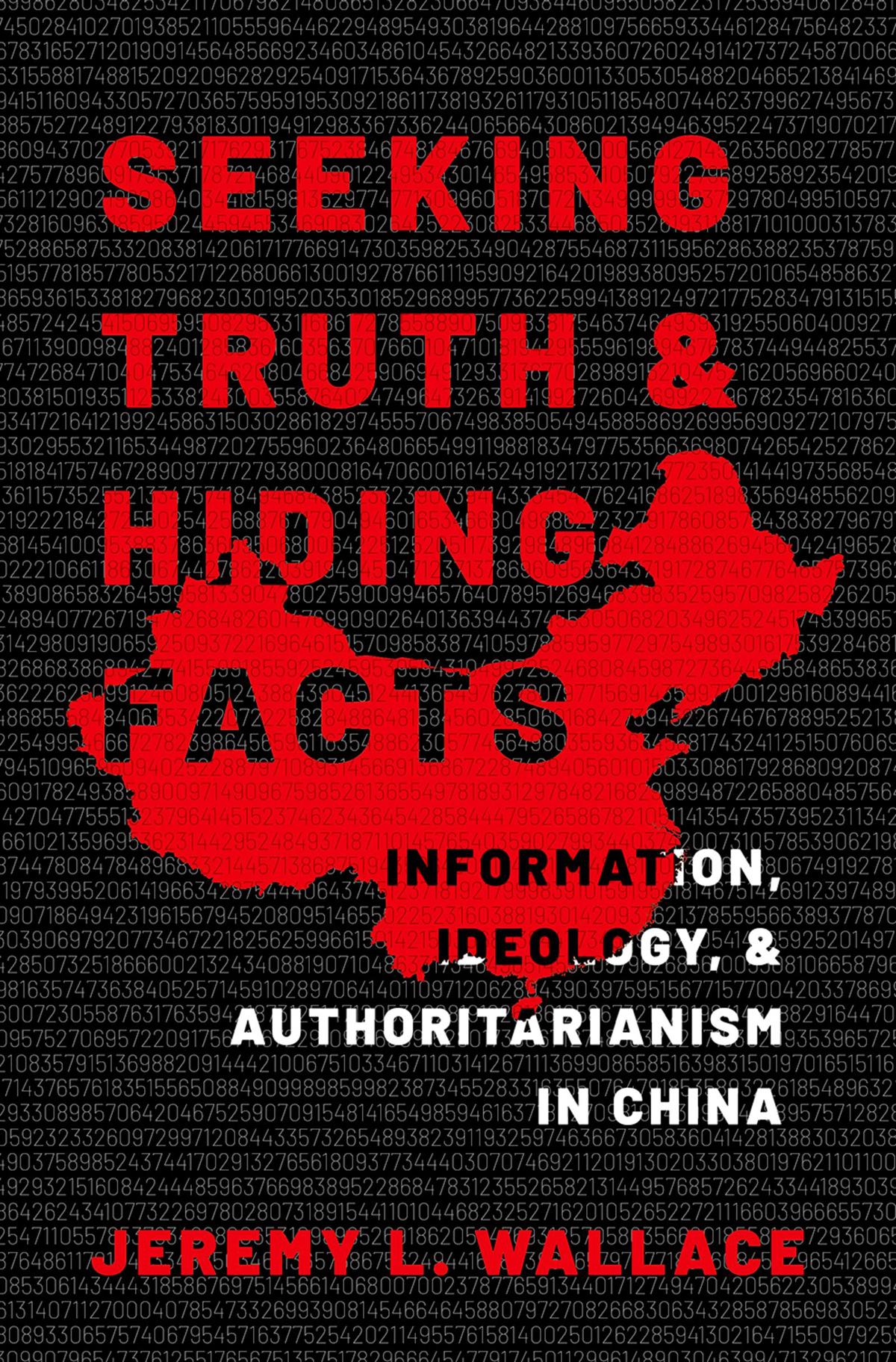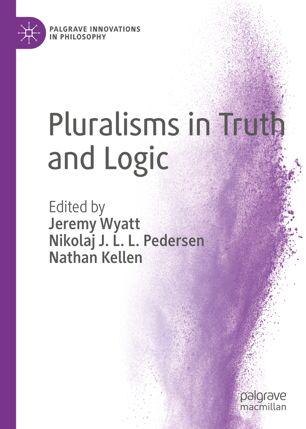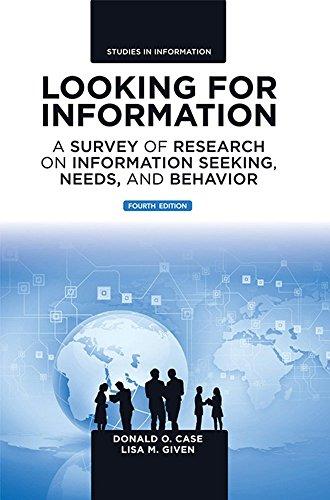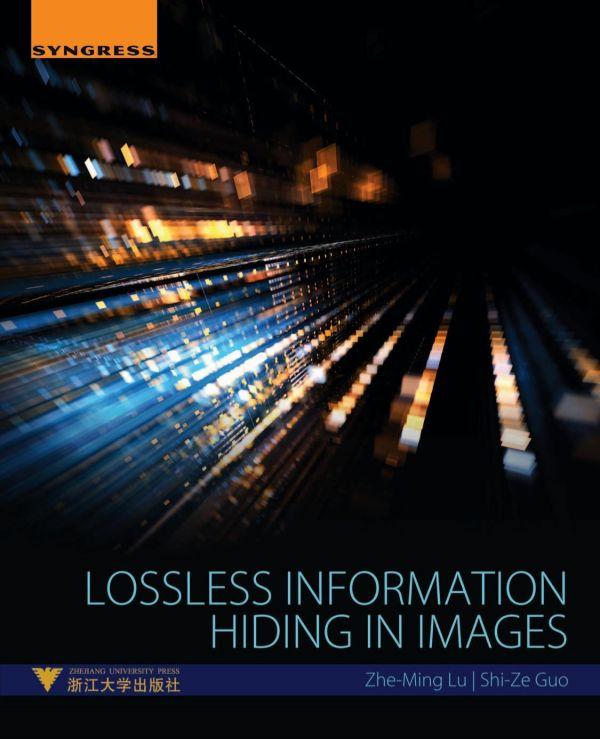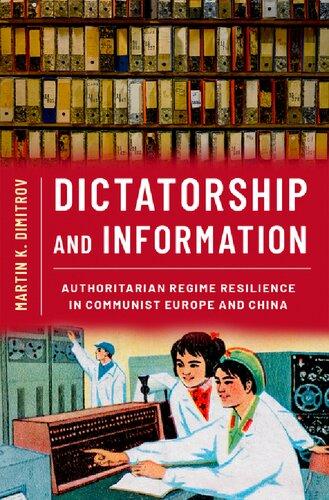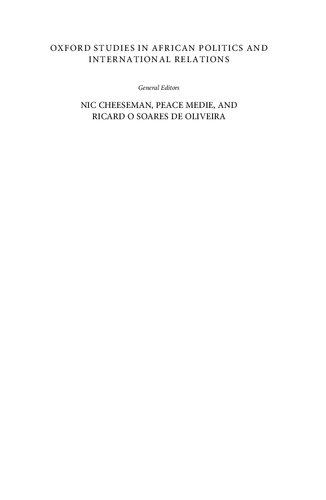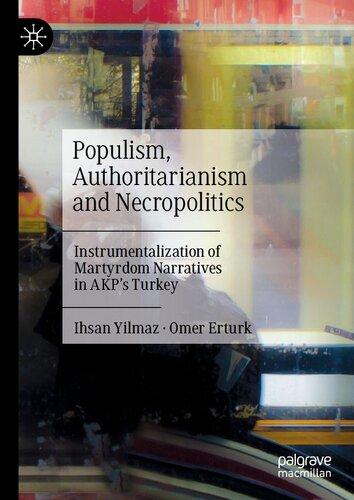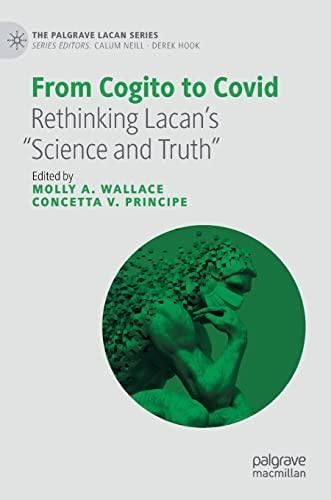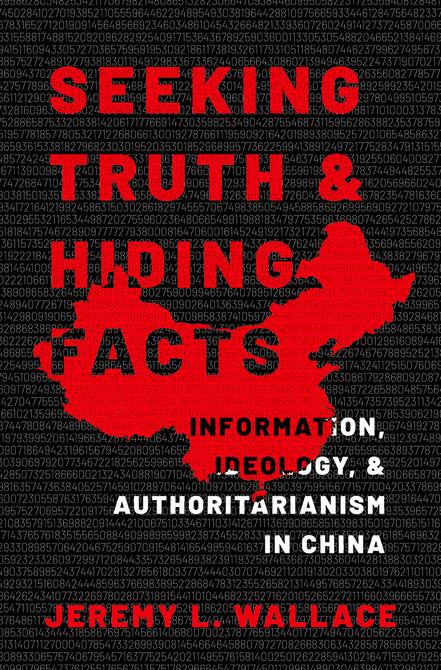Seeking Truth and Hiding Facts
Information, Ideology, and Authoritarianism in China
JEREMY L. WALLACE
Oxford University Press is a department of the University of Oxford. It furthers the University’s objective of excellence in research, scholarship, and education by publishing worldwide. Oxford is a registered trade mark of Oxford University Press in the UK and certain other countries.
Published in the United States of America by Oxford University Press 198 Madison Avenue, New York, NY 10016, United States of America.
© Oxford University Press 2023
All rights reserved. No part of this publication may be reproduced, stored in a retrieval system, or transmited, in any form or by any means, without the prior permission in writing of Oxford University Press, or as expressly permited by law, by license, or under terms agreed with the appropriate reproduction rights organization. Inquiries concerning reproduction outside the scope of the above should be sent to the Rights Department, Oxford University Press, at the address above.
You must not circulate this work in any other form and you must impose this same condition on any acquirer.
Library of Congress Cataloging-in-Publication Data
Names: Wallace, Jeremy L., author.
Title: Seeking truth & hiding facts : information, ideology, and authoritarianism in China / Jeremy L. Wallace. Other titles: Seeking truth and hiding facts
Description: New York, NY : Oxford University Press, 2023. | Includes bibliographical references and index.
Identifers: LCCN 2022021546 (print) | LCCN 2022021547 (ebook) | ISBN 9780197627655 (hardback) | ISBN 9780197627662 (paperback) | ISBN 9780197627686 (epub)
Subjects: LCSH: Transparency in government—China. | Authoritarianism—China. | Information policy—China. | Quantitative research— Political aspects—China. | China—Politics and government—2002–
Classifcation: LCC JQ1509.5.T69 W35 2023 (print) | LCC JQ1509.5.T69 (ebook) | DDC 320.951—dc23/eng/20220809
LC record available at htps://lccn.loc.gov/2022021546
LC ebook record available at htps://lccn.loc.gov/2022021547
DOI: 10.1093/oso/9780197627655.001.0001
1 3 5 7 9 8 6 4 2
Paperback printed by Lakeside Book Company, United States of America
Hardback printed by Bridgeport National Bindery, Inc., United States of America
Seek Truth from Facts
Book of Han, 111 bce
天高皇帝远. Heaven is high, and the emperor is far away.
Chinese expression from the Song Dynasty
Society isolates everyone, the beter to dominate them, divides everything to weaken it. It reigns over the units, over numerical fgures piled up like grains of wheat in a heap.
Honoré de Balzac, Le Curé de village, 1839
Acknowledgments ix
1. A Numbers Game 1
2. Quantifying Like a Regime 18
3. Seeking Truth 46
4. Afershocks 68
5. Quantifed Governance 98
6. Hiding Facts 128
7. A Neopolitical Turn 162
8. Beyond Count 193
Appendix 1: Evaluation Document Database List 215
Appendix 2: Investigations Correlated with Economic Risk 219 References 221 Index 261
ACKNOWLEDGMENTS
Many people and institutions have helped me as this book’s journey stretched out over time. I wish to thank them all and apologize to those not named. All errors, as always, are solely my responsibility.
Tis book began, as many do, out of a bit of frustration. Having writen a book that explored Chinese political economy using Chinese statistics, I was ofen asked about their trustworthiness. Tis minor irritation birthed a paper on GDP manipulation in Chinese provinces, which formed the core of a research proposal that, thanks to Allan Song’s guidance, the Smith Richardson Foundation generously funded as a Strategy and Policy Fellowship Grant. Colleagues far and wide helped me cultivate my ideas on ideological and informational politics under authoritarianism. At Ohio State, thanks are due in particular to Sarah Brooks, Vlad Kogan, Marcus Kurtz, William Minozzi, Irfan Nooruddin, Zachary Peskowitz, Philipp Rehm, Amanda Robinson, Alex Tompson, Sara Watson, and Max Woodworth. It was a pleasure to think through and write with Michael Neblo about the political implications of the COVID-19 pandemic, comparing the United States and China. At Yale, I enjoyed and learned from many generous conversations, especially with Quintin Beazer, Ana De La O Torres, Alex Debs, Susan Hyde, Stathis Kalyvas, Ellen Lust, Jayson Lyall, Nikolay Marinov, Nuno Monteiro, Ellie Powell, Frances Rosenbluth, James Scot, Milan Svolik, and Tariq Tachil.
I received excellent suggestions from presentations at UC San Diego, Stanford, Chicago, Harvard Business School, Yale, Nankai, Tsinghua, Toronto, Syracuse, Notre Dame, Columbia, UC Irvine, Maryland, and SAIS. Tanks to Jean Oi, Ben Lessing, Dali Yang, Claire Adida, Molly Roberts, Deborah Seligsohn, Meg Rithmire, Lynete Ong, Dimitar Gueorguiev, Kyle Jaros, Karrie Koesel, Joshua Eisenman, Andy Nathan, Sara Wallace Goodman, Samantha Vortherms, Margaret Pearson, Andrew Mertha, and Jonas Nahm. In particular, Junyan Jiang grilled me on an early analysis of Xi’s neopolitical turn, discussions
of which grew into collaborative research on the interplay of informal networks and falsification. Maura Cunningham’s edits made the manuscript more concise, clear, and compelling. Thanks to my research assistants, particularly Jayan Nair, Wang Weihang, Shuyu Song, Zihan Ma, Marika Levidow, Joshua Zhang, Andres Loretdemola, Lin Le, Shiqi Ma, Jiwon Baik, Denny Lee, Victoria Liu, Kailai Xiong, Madeleine Chang, Lynn Hong, Arianna Dang, Isaac Herzog, and Cole Crystal. The book also benefited from conversations with and the work of many others, including Yuen Yuen Ang, Mayling Birney, Bill Bishop, Jude Blanchette, Henry Farrell, Mary Gallagher, Yasheng Huang, Scott Kennedy, Kaiser Kuo, Pierre Landry, Melanie Manion, Abe Newman, Kevin O’Brien, James Palmer, Jen Pan, Liz Perry, Rory Truex, Lily Tsai, James Vreeland, and Yuhua Wang. Tom Bernstein, Dorothy Solinger, Greg Distelhorst, Kyle Hutzler, and Edmund Downie all read sections of the manuscript and gave excellent feedback.
My Cornell colleagues have been immensely helpful as the book slowly came into its final shape. Cornell’s Center for Social Sciences collaborative project allowed our China’s Cities team—Panle Barwick, Eli Friedman, Shanjun Li, Jessica Chen Weiss, and myself—the very rare opportunity to have space and time to reflect in ways that proved critical for this book. Cornell’s intellectual community, especially in the Government Department, has been a consistent source of intellectual stimulation and assistance; I’m particularly grateful to Nick Admussen, Amelia Arsenault, Richard Bensel, Alex Cirone, Gustavo Flores-Macias, Eun A Jo, Sabrina Karim, Alex Livingston, and Bryn Rosenfeld, as well as students in my Authoritarianism and China’s Next Economy courses. Lisa Blaydes and Martin Dimitrov joined Val Bunce, Peter Katzenstein, Tom Pepinsky, Ken Roberts, Allen Carlson, and Jessica Chen Weiss in an incredibly helpful book workshop in November 2019. The COVID-19 pandemic added yet another twist to this book’s long development. Dave McBride at Oxford University Press found excellent reviewers who gave precise advice about where to trim the manuscript of fat and where to bulk it up.
Sharat Raju and Valarie Kaur pulled me out of its vortex and pushed me to see the book through. Matthew, Laura, Karen, and Dave always bring joy. Jessica Chen Weiss continues to stay beside me, making the writing and the years ineffably better. Our twins, Rae and Lee, will be happy that there’s a new book in the house that has their baba’s name on it. My thanks for their patience. Finally, thanks to my parents, Ron and Mary Ann Wallace, who have always stood with me. It is to them that I dedicate this book.
A Numbers Game
Figures ofen beguile me, particularly when I have the arranging of them myself; in which case the remark atributed to Disraeli would ofen apply with justice and force: “Tere are three kinds of lies: lies, damned lies, and statistics.”
Mark Twain, Autobiography
1 Wen 2013. Regarding the epigraph: amusingly for a statement about truth and lies, Mark Twain is the pseudonym of Samuel Clemens, and he atributed the quote to Disraeli when the true originator of the phrase remains unclear (Lee 2012; Martin 2018).
2 Wen 2013; China Real Time 2013. Te 4 trillion yuan stimulus package contained only around 1.25 trillion from the central government.
On March 5, 2013, Wen Jiabao, outgoing premier of the People’s Republic of China (PRC), delivered his fnal Government Work Report (政府工作报 告) before an audience of thousands of National People’s Congress deputies and millions on television.1 Te speech echoed dozens that had preceded it during China’s Reform Era since it began in the late 1970s. Wen catalogued achievements from the past fve years: total gross domestic product (GDP) moving up to rank second globally; government revenue increasing from 5.1 to 11.7 trillion renminbi (RMB; also “yuan”); per capita disposable income of urban residents rising annually by 8.8%, and for rural residents by 9.9%; and grain output growing for the ninth consecutive year. In summarizing the efectiveness of the regime’s 4 trillion yuan stimulus package as a response to the 2008 global fnancial crisis, Wen listed the following construction projects: “18 million government-subsidized housing units”; “19,700 kilometers of new rail lines,” including 8,951 kilometers of high-speed rail; “609,000 kilometers of new roads”; and “31 airports and 602 shipping berths for 10,000-ton ships.”2 Premier Wen continued at length, explicating the administration’s successes and laying out the tasks for the future, but at no point did he mention any living individuals— neither politicians nor citizens—until his fnal sentence, which included a Seeking Truth and Hiding Facts. Jeremy L. Wallace, Oxford University Press. © Oxford University Press 2023. DOI: 10.1093/oso/9780197627655.003.0001
reference to “the leadership of the Party Central Commitee with Comrade Xi Jinping as General Secretary.”
When Xi Jinping visited Hebei province just six months later, the tension was palpable.3 In contrast with Wen’s anodyne number-flled speech from Beijing, a leader personally directed an inspection in the provinces intending to name names. In the months since Wen’s retirement and Xi’s ascent, local Party and state ofcials had been on the receiving end of thousands of public comments and complaints. Tese lists of personal errors served as the basis for dozens of self-criticisms during Xi’s visit to Hebei. Over two days, in four marathon “democratic life meetings,” ofcials on the verge of tears admited their failings to Xi.4 However, these apologies were not kept private within the backrooms where Party-state elites ofen make decisions; instead, China Central Television broadcast the dramatic scenes for all to see.
Zhou Benshun, Hebei’s top Party ofcial, made admissions of carelessness, laziness, and bureaucratic thinking, then apologetically added, “I cared very much about development speed and economic volumes but not as much about people’s own interests.”5 Tis part of Zhou’s confession signaled that Xi had led a stunning about-face within the Chinese Communist Party (CCP): for a Chinese local ofcial to care too much about GDP growth appeared oxymoronic afer decades of statements and reports like the one that Wen had delivered only a half-year before. Te work of Chinese ofcials during the Reform Era had seemed mostly to entail increasing the size of the economy and standing in front of audiences of other Party members, talking about reaching economic benchmarks. Tese statistics were the principal face of Chinese politics to the citizenry, the investors, and the outside world.
An explicit atack on the quantitative metrics of performance that had dominated the discourse for more than three decades—especially in the context of open, emotional displays of confict within the Party-state—points to serious changes in the form and content of Chinese politics. Indeed, these broadcasts were but one of a series of similar public presentations introducing a new normal to ofcials, the people, and the world.
A few numbers came to defne Chinese politics, until they did not count what matered and what they counted did not measure up. Tis book argues that the Chinese government adopted a system of limited, quantifed vision in order to survive the disasters unleashed by Mao Zedong’s ideological leadership, explains how that system worked, and analyzes how problems accumulated in
3 “大胆使用批评和自我批评有力武器,” 2013; 央视网2013. See also “Critical Masses” 2013; Huang 2013a; Zhang 2013.
4 On emotions, see Pearlman 2013; Hall and Ross 2015.
5 “Critical Masses” 2013.
its blind spots until Xi led the regime into a neopolitical turn. Xi’s new normal is an atempt to fx the problems of the prior system, as well as a hedge against an inability to do so. While of course dictators stay in power through coercion and co-optation, they also do so by convincing their populations and themselves of their right to rule. Quantifcation is one tool in this persuasive arsenal, but it comes with its own perils.
Te Successes and Failures of China’s Limited, Quantifed Vision
For most of the past four decades of what is referred to in China as “Reform and Opening,” development (发展) has dominated Chinese politics almost like a religion.6 Ofcials competed for promotions based on comparative developmental track records, while the regime justifed its rule to its citizens and to itself through development. Te incessant litany of fgures, statistics, and numbers all pointed in the same positive direction toward increased wealth and power for China and the Chinese people. Te popular information and ideological environment was one of policy success without presentation of alternatives, or even the articulation of the possibility of alternatives beyond some technocratic details. Tis quantifed discourse had dominated Chinese politics since Chairman Mao’s death in 1976.
How did a revolutionary Communist Party come to justify itself through a limited number of statistics, and why is it currently shifing away from doing so? Te economic and social disaster of the decade-long Cultural Revolution that preceded Mao’s death made pragmatic politicians and ideas atractive to an elite and a population tired of the turmoil of constant ideological upheaval amid persistent poverty. Tight central control and planning failed to produce growth, so the regime remade itself, decentralizing, experimenting, and marketizing. Keeping watch on just a few metrics of critical importance greased the wheels of performance. Decentralization with limited oversight unleashed individual initiative under state capitalism. Initially, economic reforms did much to aid many without harming others.7 Limited but real vision into localities gave incentives for local growth while allowing local ofcials to proft personally.8 Te country’s dramatic economic development, refected in the impressive growth of economic aggregate statistics, improved the lives of hundreds of millions of Chinese.
6 Ferguson 1994.
7 Lau, Qian, and Roland 2000.
8 See Ang 2020 on access money, Chinese corruption, and growth.
Te regime’s leaders rarely made an explicit case for what is ofen referred to as “performance legitimacy,” that is, the idea that the regime based its claim to rule legitimately on its economic performance and that this claim was accepted by the population. Implicit claims to performance legitimacy, however, were common: leaders and the propaganda apparatus regularly trumpeted a particular new statistic showing growth, development, progress.9 Te constant production of such a chorus of statistics and the lack of an opposing narrative implied that the regime was competent and popular.
However, over time, reforms came to erode the livelihoods of millions of Chinese, most notably workers at industrial state-owned enterprises that failed to succeed in the newly marketized economic environment.10 Tens of millions of these workers watched their “iron rice bowls” crack as jobs and benefts they had thought would last a lifetime vanished, while the circumstances of hundreds of millions were betered as the country industrialized and urbanized. Afer two decades of reform, the daily lives of most Chinese stopped improving at the pace they had become accustomed to, despite the continued skyward trends of the aggregate numbers summarizing the state of the economy. Te numbers’ weaknesses came to the fore. People cannot eat numbers. Te lungs of children cannot breathe them.
Limiting its vision of localities to just a few numbers—GDP, fscal revenue, investment—produced excellent performance on these measures and negative externalities elsewhere. Tis limited quantifed vision did not see important problems that came to plague Chinese society: most notably, corruption, pollution, and debt. With increasing regularity, cases of ofcials juking the stats—that is, fabricating data—came to light, undermining internal and external faith in the reality of Chinese economic growth. Even the limited set of closely watched numbers were moving in the wrong direction; most worryingly, growth was slowing and debt-f ueled stimulus became a less tenable response.11 Over time, these negative externalities came to threaten the country’s economic and political pillars.
In response to the inadequacy of the center’s limited, quantifed vision, the dictatorship has centralized power, more closely observing and controlling the actions of the lower-level politicians and bureaucrats who carry out its rule, and
9 Tis number-based politics evokes a prior generation’s “Stakhanovism,” although their numbers aimed to motivate workers, where here numbers numbed the people and motivated cadres. On the Stakhanovite movement, see Shlapentokh 1988.
10 Solinger 2003.
11 Such moments of “dissatisfaction with sluggish economic growth” tend to be associated with reform. See Van de Walle 2001, 43.
People’s Daily articles with “GDP,” 1999–2019
Figure 1.1 Te Rise and Fall of GDP Supremacy. Source: data.people.com.cn, 13,138 instances
shifing the ways it justifes its continued rule.12 As seen in Figure 1.1, People’s Daily headlines that included GDP rose throughout the 2000s but have been declining since Xi’s arrival. Xi has personally taken the reins on policy issues that had been lef to lower-level political elites under previous leaders. Under Xi, the regime initiated a massive anticorruption crusade and enhanced the institutional power of the Party’s chief disciplinary agency, the Central Commission on Discipline Inspection (CCDI).13 Private corporations have been made to establish in-house Party branches with unclear powers.14 Ofcials inside the CCP from Xi on down increasingly remark on political conficts and call on ofcials to govern with virtue and morality.
One dimension of the regime’s response to the problems of its limited quantifed vision has been to atempt to quantify everything. Centrally supported big data initiatives, including the “social credit system,” try to track and analyze the digital detritus of companies and contemporary lives. Te regime has been expanding the list of relevant statistics that it collects and evaluates—for
12 I use “limited, quantifed vision” rather than the more common term “GDPism” because even outside of GDP, facts that could be expressed in simple quantifed ways became politically compelling, such as PM2.5. Tanks to a reviewer for pushing on this point.
13 Te CCDI is also the heart of the new National Supervision Commission and Supervision Law of 2018 (China Law Translate 2018).
14 W hile the monitoring power here is obvious, the Party branch’s ability to suggest or veto specifc strategic decisions of frms remains an open question.
instance, in air pollution alone, cities have dozens of ground-based stations monitoring particulates, factories have live surveillance on fltering equipment, and satellite-based imagery extracts estimates of particulate mater. Tese technologically enhanced eforts at quantifcation in part aim to satisfy citizen demands for greater oversight of the business sector that is ofen seen as untrustworthy; they also endeavor to generate citizen compliance by suggesting a government that is always watching.15
Te most striking example of the Party-state reasserting its control over the lives of Chinese citizens comes from the western region of Xinjiang. Described as a “21st-century police state” in 2017, with checkpoints along highways, irisscanning machines, facial recognition technology at gas stations, police searching phones for banned applications, and omnipresent security forces, the situation became only more grim aferward.16 A vast system of “re-education centers”17 has been constructed, where hundreds of thousands of Uyghurs and other minorities (almost all men) appear to be detained without criminal procedures, cut of from others outside the centers, held in the prison-like facilities with barbed-w ire fences and gun towers, and forced to endure and regurgitate propaganda. Beyond Xinjiang, mosques around the country are being remodeled with Chinese characteristics and their religious practices curtailed.
Tese responses can be seen as atempts at both a fx and a hedge of China’s growth machine. Tey represent a fx in that they are atempting to rekindle the economic fre that corruption and waste have diminished and pollution has smothered. Tey represent a hedge by ofering the beginnings of a new justifying discourse of strength and traditional morality through true leadership in difcult times.
Convincing and the Words of Dictators
Coercion and co-optation alone do not hold authoritarian regimes together. Te words of dictators mater, as do the symbols they use to generate compliance from citizens and the regime itself. In her study of Assad’s cult in Syria, Lisa Wedeen argues that the resources the regime expended on it were substantial, and that analyzing the symbolic actions undertaken helps us to understand the nature of not only Syrian politics but also authoritarianism more broadly.18 Te
15 For example, Liang et al. 2018; Kostka 2019.
16 R ajagopalan 2017.
17 教育转化工作; Zenz 2019. Te Chinese government has also referred to “re-education centers” as “de-extremifcation (qu jiduanhua)” centers (Zenz 2019).
18 Wedeen 1999. See also Wedeen 2019.
people of Syria did not believe the content of the cult, yet it still held power over them and through them. At one level, throwing resources into the cult provides a signal of strength; if the regime’s hold on power were more precarious, it would not spend so much spreading these messages.19 Wedeen goes further and argues that by having people act “as if” they believe in the substance of the cult, they “substantiate” it. Saying the words builds habits of action and of mind that can make building on these cult-based “as if” habits easier and can make defying them harder. Formal models can show that even if no one directly believes in a set of messages, if they believe that others are credulous and likely to act in accordance with such beliefs, then they too will act “as if.”20
Tese are both the most basic and most extreme versions of such symbolic actions of dictators. Propagating messages demonstrates strength; any government or regime that fnds itself unable to do so quickly slips into irrelevance, which is why those atempting coups seek to seize control of the mass media (radio, television, newspapers, internet) posthaste. On the other hand, that this messaging signals strength even when its content is ignored or ridiculed delimits the terrain. Most symbolic production justifying the rule of an authoritarian regime is taken up, at least to some extent, by those exposed; its vocabulary becomes their own; even cynical expressions play with and reify these symbols.21 Te rhetoric of authoritarian regimes signals strength, generates habits, presents justifcations, frames worldviews, and shapes interests for both ordinary people and elites. Control over the information environment pairs with the “triple ignorance” that authoritarianism abides to dominate perceptions and understandings of those living under it.22
A dominant perception for many is that mass revolutions represent a key threat to dictators. Yet careful analyses of regime survival demonstrate that the principal proximate threat facing authoritarian regimes comes from other elites. As such, much recent theorizing on authoritarian politics has an elite-centric character.23 Te most common proximate risks to authoritarian regimes may come in the form of coups or intra-elite maneuvers, but elite politics is shaped by the relationship between the regime and the population, including the economic, social, and political contexts.24
19 Huang 2015a.
20 Litle 2017.
21 Wedeen 1999; Tornton 2007; Holbig 2013.
22 Schedler 2013, 40.
23 For example, Svolik 2012; Geddes, Wright, and Frantz 2018; Egorov and Sonin 2011.
24 Tis is not to deny the reality that the regimes or individuals within them can also mobilize the population to pursue particular ends (Ekiert, Perry, and Yan 2020).
Even the most repressive of dictators have been interested in and pursued popular support, atempting to convince through justifcation and information controls. As Hannah Arendt wrote, “neither [Hitler] and Stalin could have maintained the leadership of large populations, survived many interior and exterior crises, and braved the numerous dangers of relentless intra-party struggles if they had not had the confdence of the masses.”25
Ordinary citizens make political choices inside authoritarian regimes. Tey can choose to tacitly or more actively support the regime, choosing to vote for it, invest in it, or even join it; they can choose to exit, or they can choose to join the opposition, by either voting for opposition parties, participating in protests, or taking up arms.26 Tese choices hold signifcance at the individual level for the people making them but also aggregate up into forces that change the politics of countries. Elites time actions as quintessentially elite-driven as coups based on their beliefs about the probability of citizen support.27 Beatriz Magaloni refers to the hegemonic-party regime’s “monopoly of mass support” as its “pillar,” with “over-sized coalitions” acting to “generate an image of invincibility in order to discourage party splits.”28 Support from the masses papers over many issues. Political economy models of authoritarian politics tend to ignore ideology and justifcation or collapse these issues into one of competence.29 In many ways, this perspective echoes the choice of many regimes—most notably the Chinese regime in the Reform Era—to equate competence with aggregate statistical measures of economic performance and to utilize a demobilizing rhetoric of quantifed politics. What such claims miss is that debates about competence are multidimensional and that political actors atempt to select the dimensions of discourse for their own purposes. A society that is experiencing rapid increases in overall economic activity but also rising income inequality can portray itself as competent at promoting development yet could also be portrayed as betraying values of equity. A regime atempting to signal “competence” raises the question “Competence at what?” Regimes are ofen interested in generating hegemony, as David Laitin defned it, “the political forging—whether through coercion or elite bargaining—and institutionalization of a patern of group activity in a state and the concurrent idealization of that schema into a dominant symbolic
25 Arendt 1973, 306. What is true of dictators is true of the broader regimes that they lead.
26 For voting, investing, and joining, see Magaloni 2006; Blaydes 2018; Svolik 2012, respectively. On exit, many of the East European Communist regimes and contemporary North Korea restrict emigration. For opposing, see Geddes, Wright, and Frantz 2018, 186. Tese choices are the result of beliefs and shaped by the information environment.
27 Geddes, Wright, and Frantz 2018, 178, but on p. 30 there is an acknowledgment of a role for mass politics.
28 Magaloni 2006, 15; Reuter and Szakonyi 2019.
29 For example, Guriev and Treisman 2015. Again, Schedler 2013 is an exception.
framework that makes sense.”30 But the nature of that forging is contested, particularly in moments of change and reform.
Convincing maters in authoritarian politics because it shapes the lives of the individuals inside the regimes themselves—literally the words they are speaking and actions they are undertaking—as well as those of the citizens that they rule. Te dictator’s quiver is full of diferent rhetorical arrows for persuasion. Te next section focuses on one such arrow, quantifcation, its utility and its weaknesses.
Quantifcation as an Authoritarian Tool
States cannot rule over their territories without using some numbers. Te very word “statistics” is derived from the states that needed numerical data to help understand their own increasingly complex territories. As a political technique, quantifcation—“the use of numbers to describe social phenomena in countable and commensurable terms”—has numerous benefts, perhaps especially for an authoritarian regime.31 Quantifcation conveys an aura of objective truth, transparency, and scientifc authority to decisions. It organizes and simplifes a complex reality into something concrete and digestible. Quantifcation appears to aid accountability, without democracy, by generating commonly understood numerical benchmarks and facilitating comparisons, yet it simultaneously empowers the elites who create the metrics under evaluation. Even as it simplifes, it complicates debates by pushing discussion into measurement issues rather than more emotionally resonant fghts over values.
Quantifcation is one tool that authoritarian regimes can use to justify and maintain their rule. While coercion and co-optation remain critical to generating compliance and keeping order, dictators also do so by aiming to convince or persuade themselves, their populations, and the world at large of the necessity and successes of their rule. Regimes have atempted to legitimate themselves through calls on tradition, ideologies, performance, and processes.32 Quantifcation itself is not an ideology but rather a practice that is core to what has been described as technocratic neoliberalism, which pervaded post–Cold War governance under democratic and nondemocratic political systems alike.33
30 Laitin 1986, 19. Laitin’s forging is predominantly across diferent cultural subsystems over which will be hegemonic and how, whereas the forging here is principally within a particular cultural subsystem—the Party-state—about the bounds, symbols, and ends to be pursued. See also, of course, Gramsci (Gramsci and Hoare 1971).
31 Merry 2016, 1.
32 For example, Gerschewski 2013.
33 Global trends in quantifcation and neoliberalism are discussed in Chapters 2 and 8.
Quantifcation has been core to the Chinese regime’s information and ideological practices. Studies of information inside authoritarianism tend to focus on institutions, principally parties, elections, and legislatures; claims generally fall into comparisons between regimes, with these institutions having “more” information and thus a survival advantage when contrasted with regimes lacking these institutions.34 Some studies of Chinese politics, such as Rory Truex’s and Melanie Manion’s examinations of People’s Congresses and Martin Dimitrov’s work on complaints in China, present more direct evidence that these institutions do convey information to higher levels of the regime. 35 While these institutions inform the Chinese Party- state, the primary channels of information within it are formal statistical reports and the cadre evaluation system alongside the informal channels formed by networks of connections.
Visits of Beijing elites to provinces for inspections, like Xi’s 2013 visit to Hebei, complement the empowerment of the CCDI and its new state partner, the National Supervision Commission, 36 as exemplifying the center’s increased atention to monitoring the activities of lower-level actors and its justifcatory rhetoric of clean governance. As the center generates more information about localities, it atempts to grab greater control over their activities—both to constrain corruption and other “bad acts,” as well as to push the center’s priorities to be implemented at the grassroots. Increased oversight might also lead to decision-making paralysis, as local leaders fear to misstep and instead stick with the status quo. An additional potential consequence is that with more central penetration into local administration, political difculties at all levels will more directly reverberate up and down the system rather than the center being insulated by its distance from grassroots decisions.
37
Te current increase in monitoring inverts decisions made four decades earlier, at the start of China’s reforms. Like the current change, that prior reform altered the relationship between the Party elite, lower-level ofcials, and the broader bureaucracy. All dictators rely on agents to implement rules, laws, edicts, and decisions, and those at the top need to watch their agents to ensure that
34 Many studies look at information—namely as a potential mechanism by which institutions such as elections and legislatures may afect politics (e.g., Blaydes 2010; Truex 2016; Manion 2016; Gandhi 2008; Magaloni 2006). Geddes, Wright, and Frantz 2018 discuss internal security agencies in addition to elections and legislatures.
35 Truex 2016; Manion 2016; Dimitrov 2019.
36 Horsley 2018b.
37 Beazer and Reuter 2019. Te height of China’s COVID-19 crisis in February 2020 provides a crucial example; see Chapter 8.
they pursue the regime’s ends.38 Te arrival of ofcial approval for private wealth accumulation in the 1970s and 1980s complicated the job of monitoring for the Chinese regime. It opened a door by legitimating noncollective, non-Party motives, and made observing local behavior even more critical because of the increased personal incentives to deviate from central desires. Yet the center intentionally chose to restrict its own vision into localities, believing that focusing on a few statistical indicators would be adequate. Under Xi, the dictatorship is now centralizing power, more closely observing and controlling the actions of the lower-level politicians and bureaucrats who carry out its rule. Changing the information relationship within the regime and between the state and society entails altered economic and political incentives.
Te current Chinese leadership’s decision to more closely observe its own agents at local levels provides information to analysts about the threats that elites perceive. Spending funds on military equipment to combat internal or external enemies refects a perceived balance of threats diferent from a dictator lavishing such valuable resources on residents in the capital city through food subsidies. While dictators—or scholars—w ill never have a completely accurate assessment of the balance of threats that they face, more exploration about the eforts that regimes undertake to learn about and mitigate them can improve our models of authoritarian politics.39
Yet information’s role in the politics of authoritarian regimes is not a one-way street. Regimes constantly send signals about themselves, their intentions, and their priorities to internal and external audiences; they shape the information environment by puting limits on the press and the ability of the opposition to organize, censoring speech, and publicizing their own spin on events.40 China’s current centralization of information is accompanied by ideological shifs in the regime’s presentation—to itself, the public, and the world. More than merely a new slogan, the regime is leaving behind its prior incarnation as helming a technocratic growth machine that minimized politics and taking a neopolitical turn, with more overt political claims to true leadership, demonstrations of its coercive power at home and abroad, and emphasis on traditional morality and responsiveness. Assessing changes in information and ideology provides a new avenue for authoritarian scholarship.
38 Lower-level politicians and bureaucrats are agents of the center, but they themselves also possess agency (Chung 2016).
39 W hile the ofcial statements about the actions, pronouncements, and self-presentations of dictators may not be objectively true, they provide information about the self-conceptions of regimes and the threats that they believe they face.
40 Chinese internet censorship has become the most studied of these domains; see especially Roberts 2018.
Who, How, and Why?
Asking what constitutes a threat to a dictator in the frst place leads us to consider the “who,” “how,” and “why” of a dictatorship. Who is the regime? How does it rule? Why is it interested in holding power?
Te revolutionary communist fre that brought the CCP to power in 1949 had diminished to an ember by September 1976, when Mao died.41 Infghting over the country’s future course and who would take the helm erupted immediately and was not extinguished with the arrest of the “radical” Gang of Four in October. Te planned economy had ground to a halt, and China seemed as far as ever from returning to its historical place as a global center of wealth and power.42 Infghting between Mao’s appointed successor, Hua Guofeng, and Deng Xiaoping and their allies revolved around the regime’s purpose and the acceptable paths to achieve it. Deng emerged victorious and launched a series of policy and rhetorical moves that legitimated wealth accumulation, decentralized authority to local levels, and installed a system of state capitalism under collective leadership. Deng and his supporters hoped these reforms would spark individual initiative, reinvigorate the moribund production of goods and services, and reduce the chances of policy mistakes emanating from personalized rule. Te country’s leaders continued to be CCP members, but their words and deeds drifed far from those of the Party under Mao. Te ship of the Chinese Partystate was not just rebuilt piece by piece but sent of on a new course toward quantifed, globalized capitalism.
Authoritarian regimes have contested identities across the core questions of power: who rules, how, and why. Authoritarian regimes are comprised of individuals who operate within institutions, hierarchies, and networks and exist in intellectual and ideological (imagined) communities.43 Tey do this at particular moments in time, suggesting both that learning from the past is possible and that examples and currents of the moment can mater. Tey are fallible and commit errors, making decisions on limited information under conditions of pervasive uncertainty.44 Tis contested identity framework atempts to unpack the overly tidy models of authoritarian politics and respond to the call for
41 W hile the man may have had moral authority in the eyes of his fellow CCP elites, his passing exposed sincere dissatisfaction with the policy and political environment that he fostered over his fnal decade.
42 See Schell and Delury 2013. Eisenman 2018 argues that China’s agricultural sector was less of a disaster by 1976 than generally believed.
43 See Schedler 2013 on authoritarian performances for various audiences and Anderson 1983 on imagined communities.
44 Schedler 2013.
“broadening analyses of authoritarianism to incorporate alternative bases of regime stability.”45
Research Design
Te book’s chapters interweave national-level narratives of policy and politics with statistical analyses that help to clarify the argument vis-à-v is competing accounts by examining its observable implications. China is an extreme case, and comparing it—as a country, a civilization, a culture, or a regime—w ith others can be a stretch. Yet it also is a developing country with an authoritarian party regime, like dozens of others that have existed around the world in the past century.46
While China’s extreme nature is a cause for concern about the generalizability of the analysis, it is simultaneously a reason to produce the analysis in the frst place. China’s very size—demographically, economically, and geographically— makes it signifcant. Further, whether or not one sees China’s current regime as “exporting” a “model” of authoritarianism for other countries, it is clear that its actions, performance, and rhetoric are observed by leaders and populations around the world and serves as a point of comparison for them.47 Beyond observation, the Chinese regime’s control over its own domestic information environment increasingly stretches far past its own borders.48 Most authoritarian regimes are not as long-lived as the CCP Party-state, but that endurance and the history of the challenges it faced, the opportunities it pursued, and reforms it undertook can provide analysts with analogues of political experiences in other societies under diferent regimes that can improve expectations.
On the specifc aspects of information and ideology that are a core part of the book, the Chinese regime is a maximalist case. It likely collects and analyzes more total information about its economy, governance, and citizens today than any authoritarian regime in the history of the world; on the other hand, due in part to its size, the central leaders ensconced in their Zhongnanhai compound are further away from their citizens and likely face greater difculty in comprehending the complicated situations they face compared to other authoritarian regimes. Te CCP-led regime takes ideology, justifcations, and ideas more seriously than most other contemporary authoritarian regimes, with only other Communist parties as ideologically inclined.
45 Levitsky and Way 2012, 880–1. Also Glasius 2018 on authoritarian practices.
46 See Pepinsky and Wallace 2016.
47 See, e.g., Weiss 2019 for more on this debate.
48 Extraterritorial censorship is discussed in Chapter 8.
To clarify the meaning of some of the terminology used in the framework and book, here I defne “idea,” “ideology,” and “regime identity.” Ideas are “formulated thoughts expressed in a particular language,” per Sinologist Franz Schurmann.49 Ideology is a complicated construct with more abstract and concrete components. In this book, I defne “ideology” as a set of political ideas— values, assumptions, principles, and arguments—designed to give a coherent worldview and guidance about instruments for action as well as the discourse about that ideology.50
I defne “regime identity” as the perception of the regime along the three dimensions of who, how, and why, as well as how it sees, what it chooses to observe, how closely it makes those observations, and its practices of interpreting what is observed.51 “Regime,” following Geddes, Wright, and Frantz, is defned as “the set of very basic formal and informal rules for choosing leaders and policies.” Regime types—democracy and nondemocracy—are divided between those countries where leaders come to power through regular free and fair elections and countries where leaders achieve power through other means.52 My focus is on nonelectoral authoritarian regimes.53
Te second chapter develops the theoretical argument, investigating how an authoritarian regime convinces itself and others that it should rule. Regimes have contested identities along dimensions of who rules, how, and why, and individuals embedded in these regimes atempt to build justifcations for their rule and the actions that constitute it. Quantifcation is a rhetorical device central to many authoritarian justifcation strategies, with a variety of features atractive to such regimes. Quantifcation tends to engage the deliberative rather than the instinctive mind, taking the heat out of potentially emotionally charged political
49 Schurmann 1966, 19. However, whereas for Schurmann language in this defnition is “Marxism-Leninism” or something like it, I take a broader view and do not restrict ideas to thoughts that come out of or are from a particular ideology. “Language” in Schurmann is closer to what I, following Wedeen and others, instead refer to as “vocabulary,” meaning the ideas, tropes, symbols, and rhetoric of a particular ideology.
50 Tis defnition of ideology combines ideas from Schurmann 1966, 22–3 on pure and practical ideology and Gill 2011, 2–3, incorporating Gill’s concepts of ideology as well as metanarrative.
51 Schurmann 1966, 9n108 refers to the Party’s “self-perception,” but regimes have identities to both insiders and outsiders.
52 Geddes, Wright, and Frantz 2018, 5. On democracy: “In keeping with much of the literature, countries are coded as democratic if government leaders achieve power through direct, reasonably fair competitive election; indirect election by democratically elected assemblies; or constitutional succession to democratically elected executives.”
53 For electoral authoritarians, see Levitsky and Way 2010; Schedler 2013. I defne reform as a choice to undergo a major change in direction for a political regime, in terms of policies, institutions, practices, and rhetoric. Te reference to choice here connotes both some minimum of (1) intentionality and (2) ability to make other choices (i.e., voluntary).
dilemmas. Te appearance of objectivity and universalism rather than particularistic favoritism appeals to humanity’s pro-fairness disposition. Number-based discussions complicate issues, pushing deliberation into measurement questions rather than values and framing debates as about concrete facts rather than more ephemeral but signifcant reactions. Yet quantifcation is hardly a panacea, as the gaming of evaluation systems eventually produces unreliable measures of their original intent and performance inevitably wanes. Tese efects lead audiences and authors to yearn for a diferent discourse.
Te third chapter wades into the debates that undergirded the Mao to postMao transition in China to show how revolutionary Communist ideology was supplanted by quantifed state capitalism as the regime’s main argument for staying in power. While Mao and his thought emphasized revolution as the method to transform a backward country into a Communist utopia, by the time of his passing in 1976 the population and many elites were ready for a new message and course of action. Te regime called for individuals to emancipate themselves from ideological shackles and granted lower-level ofcials greater autonomy to pursue development. While under Mao numbers had signifcant political import, they represented a means to an end rather than becoming the core political end in themselves. Under Deng, a system of limited, quantifed vision was established intentionally, despite understanding that moving away from radical Maoism increased opportunities for corruption.
Te fourth chapter showcases the political difculties of leaving behind the status quo for a new strategy of justifcation. China’s reforms were not setled at 1978’s Tird Plenum, but afershocks from that conference reverberated in the decade that followed. Afer detailing personnel changes as revolutionaries were retired and replaced by technocrats, the chapter presents examples showing how numbers came to defne Chinese politics, with emphasis on the deeply quantifed nature of the one-child policy. Te political waves of loosening and tightening that dominated the 1980s illustrate that mass politics and the macroeconomy shaped elite political debates and choices. Te afershocks setled in a two-step of repression against the Tiananmen movement in 1989 and public acknowledgment of the reform trajectory’s developmental success with Deng’s Southern Tour in 1992.
Te ffh chapter turns to the ways that the Reform Era’s political economy model of limited, quantifed vision worked to generate development through the 1990s and early 2000s. Inequalities deepened despite growth, and while some eforts were made to aid lef-behind regions and the poor, the chief rhetorical switch was to embrace “advanced” forces of capitalism and capitalists. Te Hu-Wen leadership team rhetorically made alleviating poverty a priority and tinkered at its edges through diferent programs, but, in the main, the Chinese ship of state continued sailing in the same direction of seeking aggregate
economic growth. When the 2008 global fnancial crisis shook the world, the regime reverted to massive Keynesian stimulus to calm the waters.
Te system of limited quantifed vision’s core institution is cadre evaluation, with its numerical performance targets. Original cadre evaluation forms and guidelines enrich existing understandings of the system, which are based mostly on observed promotion paterns. Even as the diversity of targets increased, aggregate economic targets remained central to the scoring. Te direct politics of quantifcation is also seen in the contrasting tales of two environmental indicators, the failed Green GDP and the successful measurement of PM2.5, which worked rhetorically as a simple metric that captured public atention and galvanized government action.
Te sixth chapter shows how debts, pollution, corruption, and falsifcation accumulated over time as externalities of the system of limited, quantifed vision. Te center’s focus on a few statistical quantities lef room for enterprising individuals to hide facts for their own beneft. Risky loans funded short-term investments to meet performance targets by leaders who lef broken balance sheets in their wake. Corruption grew from merely pervasive to marketdistorting. In China’s cities, who and what was counted led to the striking presence of slums amid ghost cities. Ofcials falsifed data, “juking the stats” by which Beijing judged them. Statistical analyses demonstrate that GDP jumped during politically signifcant moments more than other, less politically sensitive measures indicated. Citizens, too, took advantage of the regime’s limited vision and manipulated data to their own beneft, as seen in examples of strategic divorces and “growing houses.”
Te seventh chapter describes China’s neopolitical turn. China’s leaders are reshaping the country’s politics and economy through massive eforts of anticorruption, centralization, repression, and rhetoric focused on narratives of the Party as the champion of a strong Chinese nation. As with the beginnings of the Reform Era, signifcant debates about threats, priorities, and possibilities—regime identity— dominated discussions, as ofcial consensus acknowledged the failures of limited, quantifed vision. Te early days of Xi’s rule are then explored to demonstrate the incremental and tentative nature of such changes and interpretations of them. Te turn takes the Chinese regime beyond its limited, quantifed vision in two ways. First, rather than presenting political and economic problems as clean, technical issues to be counted and resolved, the regime under Xi presents a messy, confictual picture with failures and enemies, but also depicts itself as a regime guided by a strong leader who can helm the ship of state amid the turbulence. Second, the regime is massively expanding the information that it collects and monitors about its own agents as well as society, notably through its social credit system.
Te book concludes by moving beyond China to the ways its boom has remade the world. First, it dives into the initially dangerous but ultimately triumphant politics of the COVID-19 pandemic, afrming the fundamental nature of authoritarian information problems. China’s limited quantifed vision and censorship apparatus have extended past its borders, prompting concerns about the role of facts in politics and the power held by those shaping their presentation. Finally, Chinese developmental successes have upended beliefs about economic governance, and China has played an underappreciated role in the rise, hegemony, and fall of neoliberalism.
